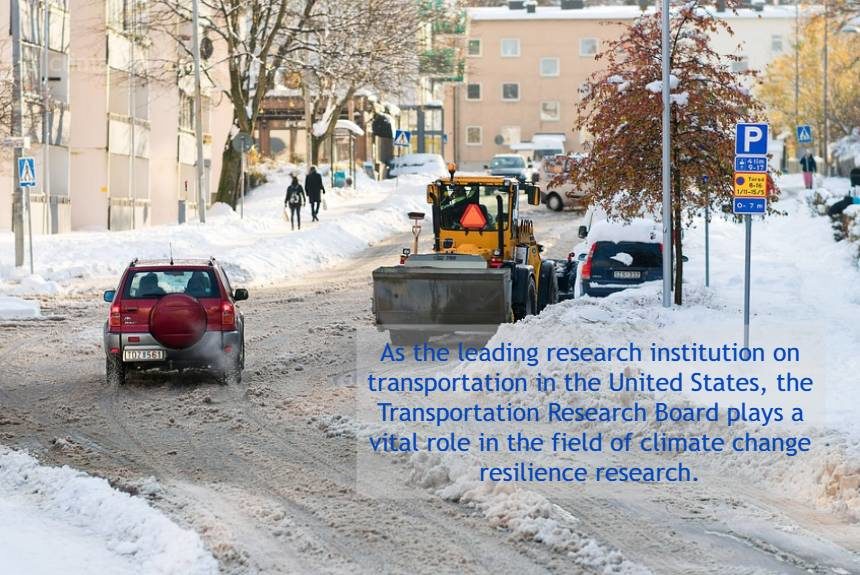TR News Magazine, a bimonthly magazine of the Transportation Research Board (TRB), published a report, “Critical Issues in Transportation 2019,” in its November/December 2019 issue. The report focused on climate change resilience in the transportation sector.
The report’s author is Vicki Arroyo, Executive Director of Georgetown Climate Center, professor of Practice at Georgetown University Law Center, Washington DC, and 2019 Transportation Research Board (TRB).
Arroyo’s report mentions the following:
- The rapidly changing climate is increasing the frequency of extreme climatic events, such as flooding, droughts, heatwaves, bushfires, and hurricanes. These events impact and threaten transportation systems, making it challenging to provide crucial services to the community, individuals, and critical systems, as described in the Fourth National Climate Assessment.
- With this emerging threat from climate change, decision-makers and governments need to prepare their transportation assets accordingly. They would need better information and innovative best practices to tackle these challenges.
- The report outlines strategies for building resilience to climate change in the transportation sector. Transportation is vulnerable to climate change but is also the largest source of GHG emissions, and as such, there is an immediate need to reduce emissions from this sector.
- In the United States, climate change resilience is being integrated into the country’s federal, state, and local systems and decision-making processes.
Discussing FHWA and FTA
The report discusses the activities of the Federal Highway Administration (FHWA) and the Federal Transit Administration (FTA) aimed at enhancing understanding of the impacts of climate change.
For over a decade, the Federal Highway Administration (FHWA) has led efforts to understand the impacts of climate change on the surface transportation sector.
It has funded pilot projects that have enabled the mapping and assessment of climate vulnerabilities across countries, the evaluation of adaptation options, including nation-based options for coastal areas, and the integration of resilience into the asset management process.
In a report, the Federal Transit Administration (FTA) has documented the current and anticipated impacts of climate change on public transportation systems and assets, enabling them to adapt to the consequences. It has also funded transit agencies’ pilot projects to help them analyse risks and develop adaptation strategies.
State Leadership
The report mentions that the states are leading the way in preparing their transportation systems for climate change by integrating resilience into state legislation, agency policies, and executive orders. It cites the following developments:
- California passed legislation in 2016 requiring the development of a Climate-Safe Infrastructure Working Group to integrate climate science into state project engineering.
- In New York, the 2014 Community Risk and Resiliency Act has mainstreamed climate change into state investment decision-making, particularly by incorporating statewide sea-level rise projections and developing new criteria for evaluating public infrastructure that consider sea-level rise, storm surge, and flood risk mitigation.
- Washington State Department of Transportation’s (DOT) environmental review process has incorporated guidance for evaluating climate change impacts on transportation projects and developed a guide for integrating resilience into transportation planning since 2009.
- Other states have also begun assessing the impact of climate change on their transportation systems.
Local leadership
Municipalities and regional agencies are engaged in adaptation planning, adopting best practices and developing policies to integrate resilience into their decision-making processes.
Some local governments also incorporate risk mitigation and resilience into their project designs and policies related to infrastructure investment decisions. For example, Florida requires future conditions maps that consider the effects of sea-level rise on the groundwater table for drainage and water management infrastructure projects.
New York and San Francisco have integrated climate resilience and projections into their cities’ planning and projects. Other communities have also implemented green infrastructure programs to manage rainfall and stormwater-driven flooding.
TRB’s role
As the leading research institution on transportation in the United States, the Transportation Research Board plays a vital role in climate change resilience research. It is focused on resilience and sustainability issues in the transport sector and develops recommendations on research gaps.
Through its research and publications, it has led the development of information on the impacts of climate change on transportation, best practices for adaptation, and suggestions to improve decision-making and reduce risks, helping decision-makers create more resilient assets, systems, and processes.
The report also cites the international conference and summits on transport resilience to climate change that TRB sponsored.
The report outlines the future directions of resilience research, noting that there are still more questions than answers regarding the alignment of land use, development, and transportation policies and investments with adaptation strategies. TRB plays a crucial role in answering these questions.
CLICK on the button below to read the entire report:
Source:
Arroyo, V. (2019). Critical Issues in Transportation 2019: Climate Change Resilience. Georgetown University Law Center. Retrieved from https://scholarship.law.georgetown.edu/cgi/viewcontent.cgi?article=3230&context=facpub



Leave a Reply